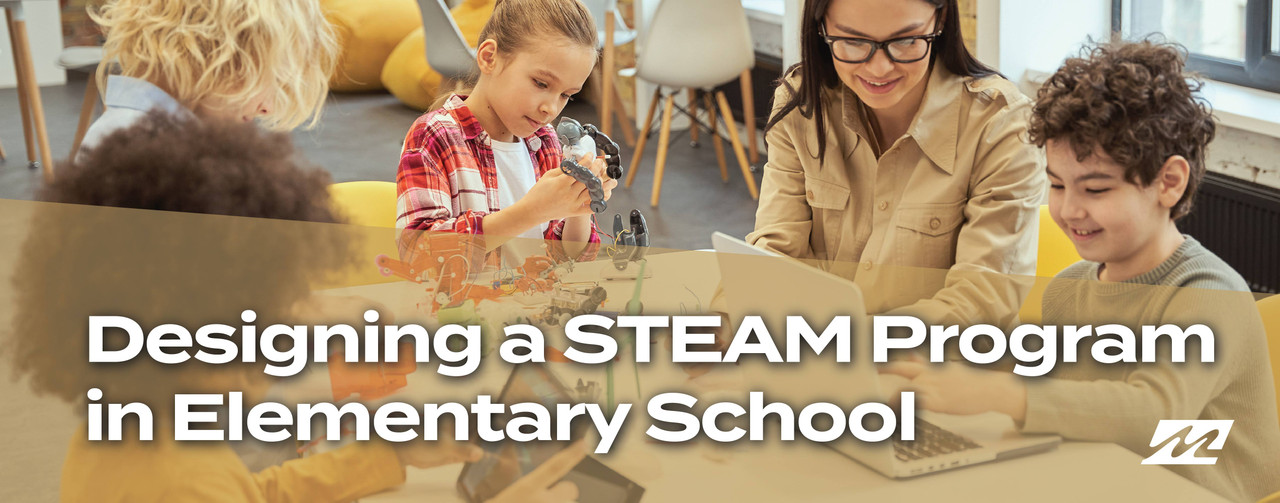STEAM is often considered to be for high school and college students, and some educators feel they need to be an expert in each area in order to teach it or that students will only be working on computers or science worksheets. However, STEAM education is for students of all ages and is probably already being taught in your classroom without you even realizing it!
What Does STEAM Look Like in Elementary School?
With so much information easily available on the internet, it’s no longer necessary for students to memorize facts. Instead, children’s education can be more focused on thinking critically and evaluating information, then applying their knowledge, research, and skills to solve problems. Therefore, it makes more sense to teach STEAM in an integrated way rather than individual subjects.
Some great examples of STEAM activities include challenges, like asking kids to use aluminum foil to create a boat that holds as many coins as possible without sinking. This activity involves planning, designing, building, testing, and modifying. Students can compare the boats and discuss what made them successful in the challenge.
Children also like incorporating fairy tales into their STEAM learning. For example, using the story of the Three Little Pigs, students can design and create a house that will withstand the wolf’s huffing and puffing. Offer students different building materials and use a fan or blow dryer to simulate the wolf. This gets students using multiple aspects of STEAM learning to solve the problem.
Building a STEAM Environment
An environment is more than physical classroom space. It also includes the STEAM supplies in the classroom, the teaching strategies being used, and the curriculum being taught. All these topics inform how you provide STEAM education in elementary school.
Teaching Strategies and Curriculum
Children use playtime for learning and development, so it’s crucial to include STEAM as part of playtime. Embed children’s interests into what they play with and how they play when searching for topics to explore in the classroom.
Children also need plenty of time to explore these STEAM opportunities. Weave it into different parts of the day such as morning meetings, outdoor play, or large and small group time. This provides students with frequent opportunities to absorb and process STEAM concepts for deeper understanding.
Physical Space and Materials
The physical space and materials present also enhance STEAM learning. Places like a large carpet, a STEAM table or cart, a sand and water table, or a light table all provide options for go-to locations to work on STEAM-related activities.
STEAM kits for classrooms are a great place to start. You can purchase pre-built kits or gather your own STEAM equipment for a DIY starter kit. Some basic items to have on hand include funnels, magnets, rulers, and tape measures.
You’ll also want to stock plenty of consumable materials such as cardboard tubes, straws, toothpicks, pom-poms, tape, and modeling dough. These can be used for open-ended, hands-on activities that ask children to build, connect, sculpt, and decorate.
Don’t forget about electronics and technology in your STEAM classroom. Many schools now offer iPads or Chromebooks to students, but also consider finger lights or beginning circuitry kits.
The Teacher’s Role
A great STEAM environment is just part of the picture. Teachers play a big role in supporting students as their STEAM guides.
Observation - Moving around the classroom and sitting down next to the children helps you notice their interests and engage in conversations with them. This gives you a better idea of their understanding and how they’re learning so you can make informed decisions to change the environment or activities for optimal learning.
Participation - Truly listening to what children are saying boosts their learning and allows for better assessments. Use self-talk or parallel-talk to model language and build STEAM vocabulary. Engage in conversations by asking open-ended questions and take turns talking back and forth.
Scaffolding - Students need to be challenged enough to learn, but not so much that they get frustrated and give up. Acknowledging and encouraging student efforts, giving specific feedback, modeling or demonstrating something, and offering hints or assistance are all ways to scaffold their learning.
STEAM Products for Schools
High-quality STEAM experiences give students the opportunity to develop critical thinking, executive functioning, and problem solving skills across the curriculum. This helps them build a foundation for how to approach learning and thinking as they grow.
When you’re ready to build your own STEAM classroom, we have a variety of STEAM products for schools including electronics project kits, robotics, science kits, and more. Give us a call at 1-800-831-5904 or contact us online if you have any questions.

